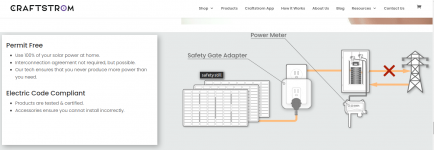gadfly56
Senior Member
- Location
- New Jersey
- Occupation
- Professional Engineer, Fire & Life Safety
If the zero-export system isn't air-gaped with respect to the grid, I don't see how you get around an interconnection agreement.True but I was referring how the zero export mechanism would be affect how POCO's or government agencies might or might not require interconnection agreement.


